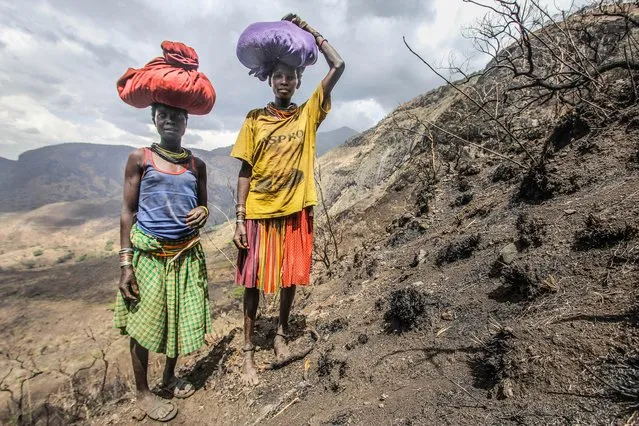
Karamojong women climb Mount Moroto in search of firewood which they can then sell at the local market in Moroto town, Karamoja, Uganda, February 2017. Inside the African tribe that walk for up to 10 hours a day to find water. Photographer, Sumy Sadurni, travelled to Northern Uganda to capture how the Karamajong tribe live. The nomadic tribe are famous for their elaborate scar patterns, athletic prowess and beautiful woman, but Sumy wanted to focus on how the climate change has affected their lives in a big way. (Photo by Sumy Sadurni/Barcroft Images)
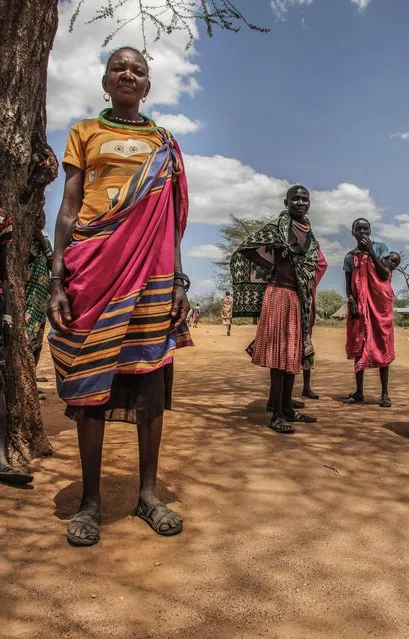
Pokot tribeswomen are usually more decorated than Karamojong women, Karamoja, Uganda, February, 2017. (Photo by Sumy Sadurni/Barcroft Images)
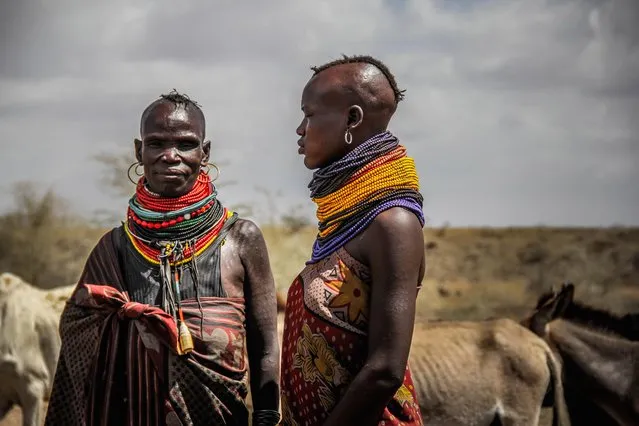
Turkana cattle herders travel from Kenya into Karamoja to find water for their cattle. Unlike the Karamojong, Turkana women also take part in this way of livelihood, Karamoja, Uganda, February, 2017. (Photo by Sumy Sadurni/Barcroft Images)
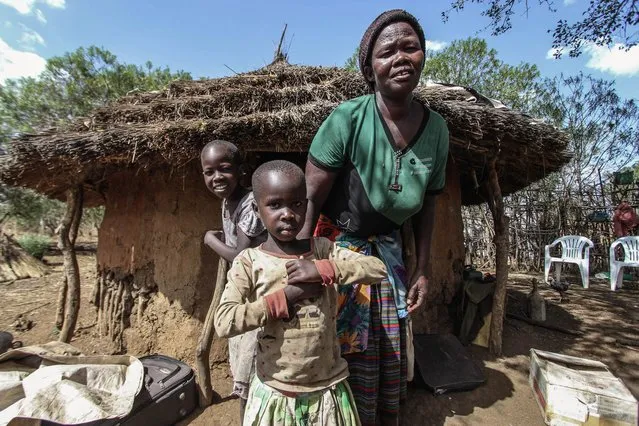
Marta and her children in Napak district, Karamoja, Uganda, February, 2017. (Photo by Sumy Sadurni/Barcroft Images)
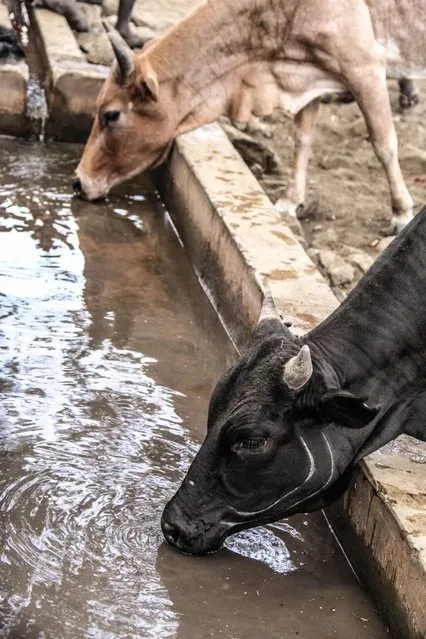
Herders travel massive distances in order to get to a common borehole now that there is barely any water in the region. Cows are marked according to the owner. Cattle theft, disease and death from dehydration are the most prevalent challenges in, Karamoja, Uganda, February, 2017. (Photo by Sumy Sadurni/Barcroft Images)
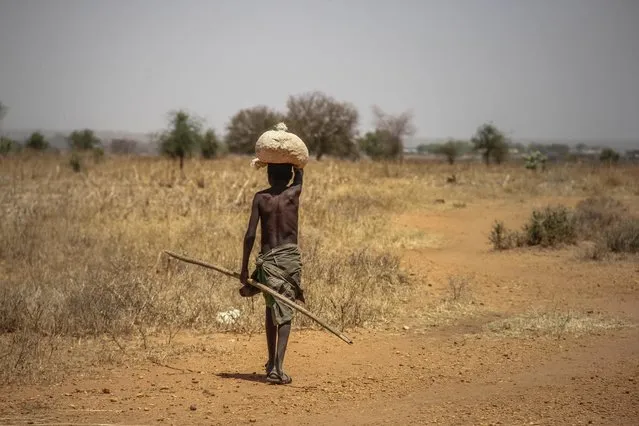
A young boy in Napak district, one of the hungriest ones in Karamoja, Uganda, February, 2017. (Photo by Sumy Sadurni/Barcroft Images)
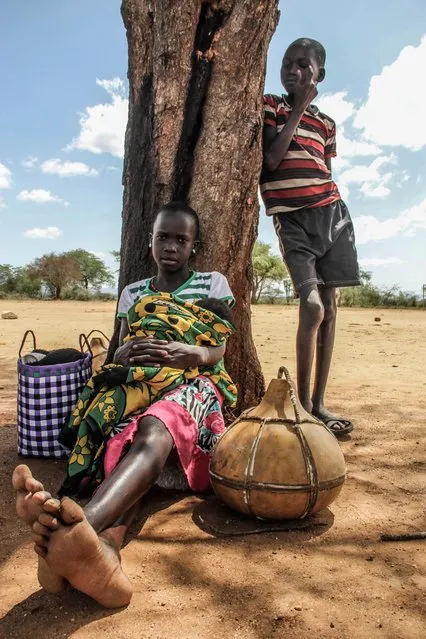
Children often look after their younger siblings while the parents are away working, Karamoja, Uganda, February, 2017. (Photo by Sumy Sadurni/Barcroft Images)
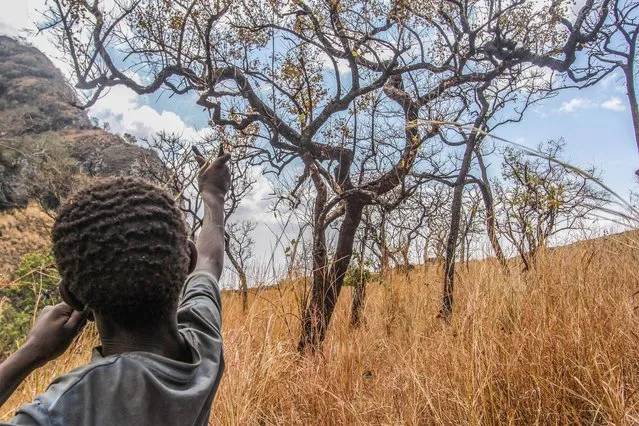
Children often go out to hunt small birds and bat with home made sling shots, Karamoja, Uganda, February, 2017. (Photo by Sumy Sadurni/Barcroft Images)
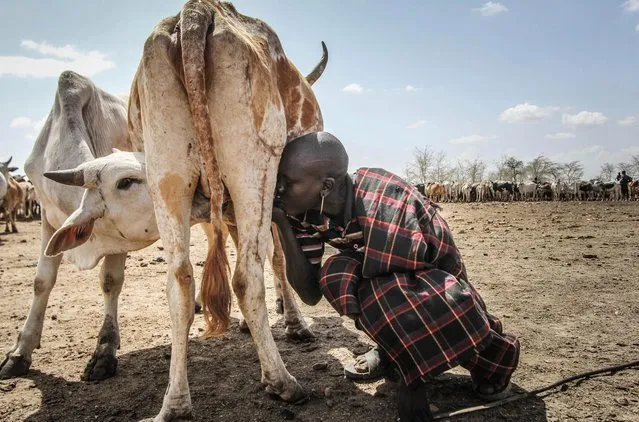
Cattle are the most important way of livelihood for the Karamojong: they provide milk, meat, blood and money when sold, Karamoja, Uganda, February 2017. (Photo by Sumy Sadurni/Barcroft Images)

People look for cover when these dusty gushes of wind happen, Karamoja, Uganda, February, 2017. (Photo by Sumy Sadurni/Barcroft Images)
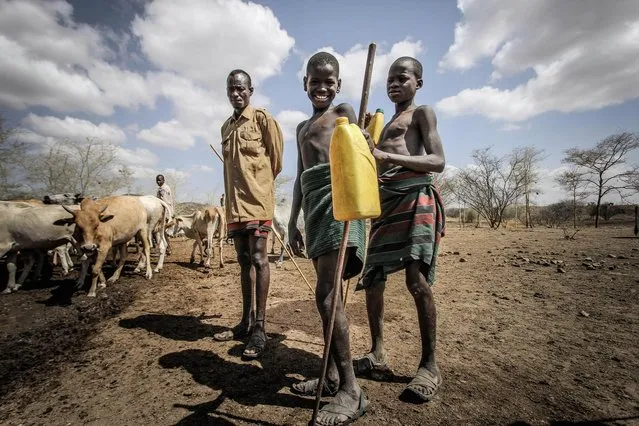
Karamojong boys begin looking after goats when they're five years old. At the age of around seven, they will move on to calves and by the age of ten they will be looking after cows, Karamoja, Uganda, February, 2017. (Photo by Sumy Sadurni/Barcroft Images)

A Pokot tribeswoman: the Pokot and Karamojong have a long history of clashes and still now there is tension between both tribes. In Amudat, home to the Pokot, there is slightly greener grass but the Karamojong will not graze there, Karamoja, Uganda, February, 2017. (Photo by Sumy Sadurni/Barcroft Images)
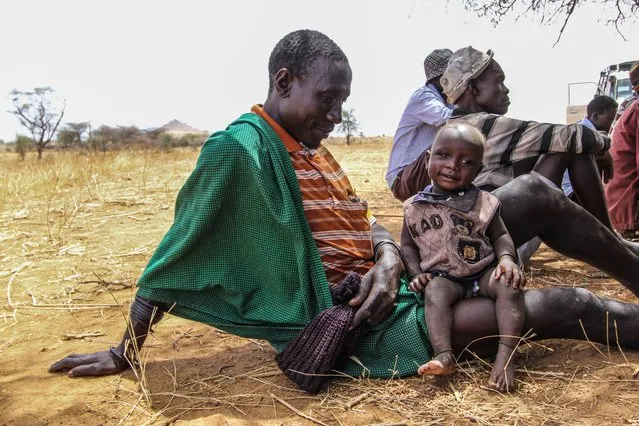
A young dad in Napak district looks after his boy at a community meeting, where people from the village get together and talk about the lack of harvests and water, Karamoja, Uganda, February, 2017. (Photo by Sumy Sadurni/Barcroft Images)

Scarrified dots around the eye area are a common beauty feature in the Karamojong culture. They are usually pricked by thorns and rubbed with mud to add surface, Karamoja, Uganda, February, 2017. (Photo by Sumy Sadurni/Barcroft Images)
17 Feb 2017 00:02:00,
post received
0 comments
